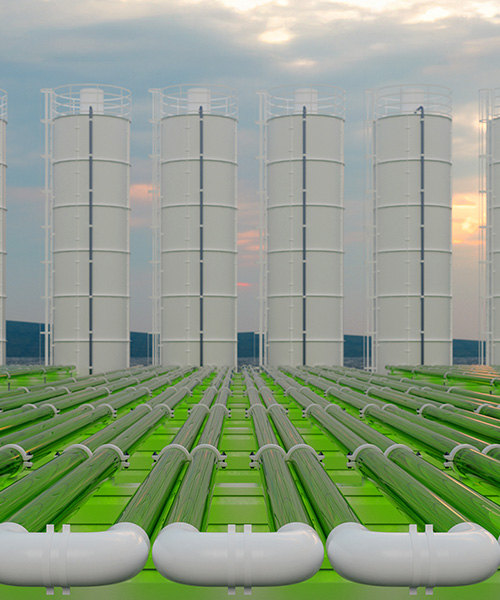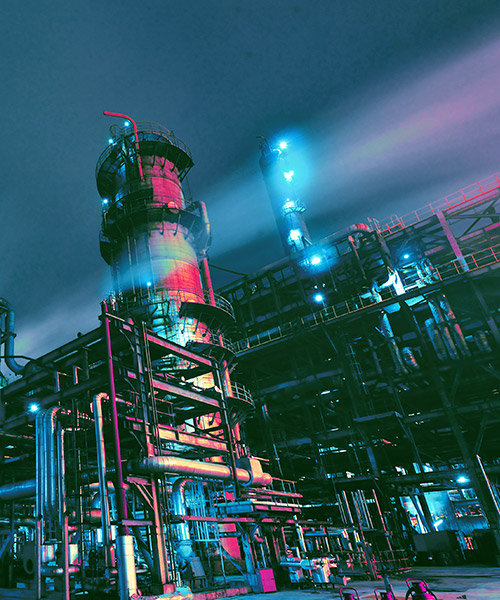February 01, 2024 • 5 min read
Fermentation: Using an age-old process to produce lower carbon fuels
Can fermentation help overcome feedstock constraints for lower carbon fuel producers?
“Feedstock availability is a key limitation for lower carbon fuel production,” says Geert Reyniers, Director of Technologies. “To produce more sustainable liquid fuels at scale – all over the world – producers need to be able to use a greater range of feedstocks.”
Reyniers is an expert in low carbon fuels, a broad grouping of technologies and processes that can fuel combustion engines without needing fossil fuels.
“There are multiple ways to produce these fuels,” he says. “Some producers process feedstocks such as vegetable oils, fats and waste oils into transport fuels. But these feedstocks aren’t abundant enough to displace over 100 million barrels of oil consumption globally per day.”
So, can emerging fermentation technologies enable lower carbon transport fuel production at scale around the world?
Explaining fermentation
Reyniers describes the fermentation process, and how it can support more sustainable transport fuel production.
“Fermentation is a biologically orchestrated transformation of biomass – made up of organic materials that come from plants and animals – into lower carbon liquid fuels for transport, such as ethanol and biodiesel,” he says. “This process has the potential to achieve lower CO2 emissions than conventional oil and gas production, across the lifecycle of the fuel.
“Take corn ethanol’s carbon intensity (CI) as an example. With some variation, a corn ethanol plant in the US may achieve a CI of ethanol of about 70 g CO2(e)/MJ, accounting for emissions throughout the value chain. By implementing a combination of various CI reducing technologies such as CCUS, AD and low carbon electricity, the achievable CI score could be significantly lower than the fossil fuel it replaces.
“So, if we can source enough suitable biomass for fermentation, we can use it to help sustainably meet the scale of liquid fuel demand from modern society, which mostly relies on crude oil-based fuels for transport today.
“However, displacing tens of millions of barrels of oil demand for transport each day won’t happen overnight.”
Key challenges in making fermentation a viable lower carbon fuel pathway
Reyniers describes the key hurdles holding back fermentation pathways for fuel production today.
“Different biomass sources can pose distinct challenges in terms of their composition, which impacts the efficiency of fermentation processes. This means producers need to ensure consistent feedstock quality and manage the complexities of different biomass materials, while staying profitable.”
Another challenge is the competition between food and lower carbon fuel production.
“In some regions, particularly where food resources are already strained, using agricultural products or arable land for biofuel production can contribute to the food security issue,” Reyniers says. “Striking a balance between sustainable feedstock sourcing for biofuels and safeguarding global food supplies remains a complex and sensitive challenge that the industry must address,” says Reyniers.
Fermentation processes that rely on existing technologies also need a precise control of environmental conditions.
“This includes temperature, pH, and nutrient levels, to ensure optimal microorganism growth and product formation,” adds Reyniers. “These conditions can be challenging to maintain, especially in large scale industrial fermentation.
“It’s a fine balance of optimization and maintaining cost efficiency, while meeting technical requirements.”
Emerging trends in fermentation
There are several trends that could impact the viability of fermentation in the coming years.
“Emerging fermentation technologies use more advanced biotechnological techniques, such as genetic engineering and synthetic biology,” says Reyniers. “These methods create tailored microorganisms that can convert a broader range of feedstocks into biofuels and valuable chemicals.
“This precision engineering both enhances the efficiency of the fermentation process, but also broadens the range feedstocks fuels producers can use. These feedstocks include an organic fraction of municipal solid waste, organic industrial waste, forestry residues, and agricultural waste, instead of crops that might compete with food.”
Another trend is the development and commercialization of advanced fermentation based technologies. Businesses like LanzaTech and Praj Industries are pioneering ethanol production using such technologies.
Regional trends driving fermentation for biofuels
As Reyniers notes, there are specific factors in different regions that impact fermentation uptake and viability.
“Regions like Europe and the Nordic countries – with ample access to biomass resources – are actively refining and developing fermentation-based conversion technologies,” says Reyniers. “Technical advancements in process optimization, bioreactor design, and strain development are allowing these areas to tap into their local biomass assets, creating a more sustainable and regionally tailored approach to energy production.
“The United States also has a rich agricultural sector and is focusing on leveraging its abundant biomass resources,” continues Reyniers. “The US is also an established player in the biofuels market, and this is projected to grow as environmental concerns drive demand for lower carbon fuels.”
Fermentation progress is occurring in other regions, too.
“Chinese companies are making substantial investments in biotechnology and bioenergy, aiming to meet their growing energy demands while reducing their carbon footprint,” says Reyniers. “With a large population and increased urbanization, waste management is a growing concern in China. Fermentation can play a pivotal role in addressing these challenges if producers can use municipal waste for fuels production.
“In Latin America, Brazil has long been known for pioneering work in bioethanol production, which uses sugarcane as a feedstock. But beyond bioethanol, there's a growing interest in diversifying the use of biomass resources to create lower carbon fuels and chemicals. The abundant natural resources in Latin America make it a hotbed for fermentation research and development.”
Fermentation’s role in displacing fossil fuel demand
How transport fuels producers manage the feedstock challenge will have a big impact on the speed of the energy transition, particularly for hard to abate transport sectors such as aviation and long distance road transport.
“There is no single solution to produce lower carbon liquid fuels at the scale required to displace fossil fuel demand from transport,” says Reyniers. “But if transport fuels producers can use both established biomass feedstocks – and emerging feedstocks such as municipal waste all over the world – fermentation can be a pathway to scale up lower carbon fuels production. And this is also crucial for transport operators that are committed to decarbonization, but don’t have viable pathways to electrify their fleets or transition to hydrogen yet.”




